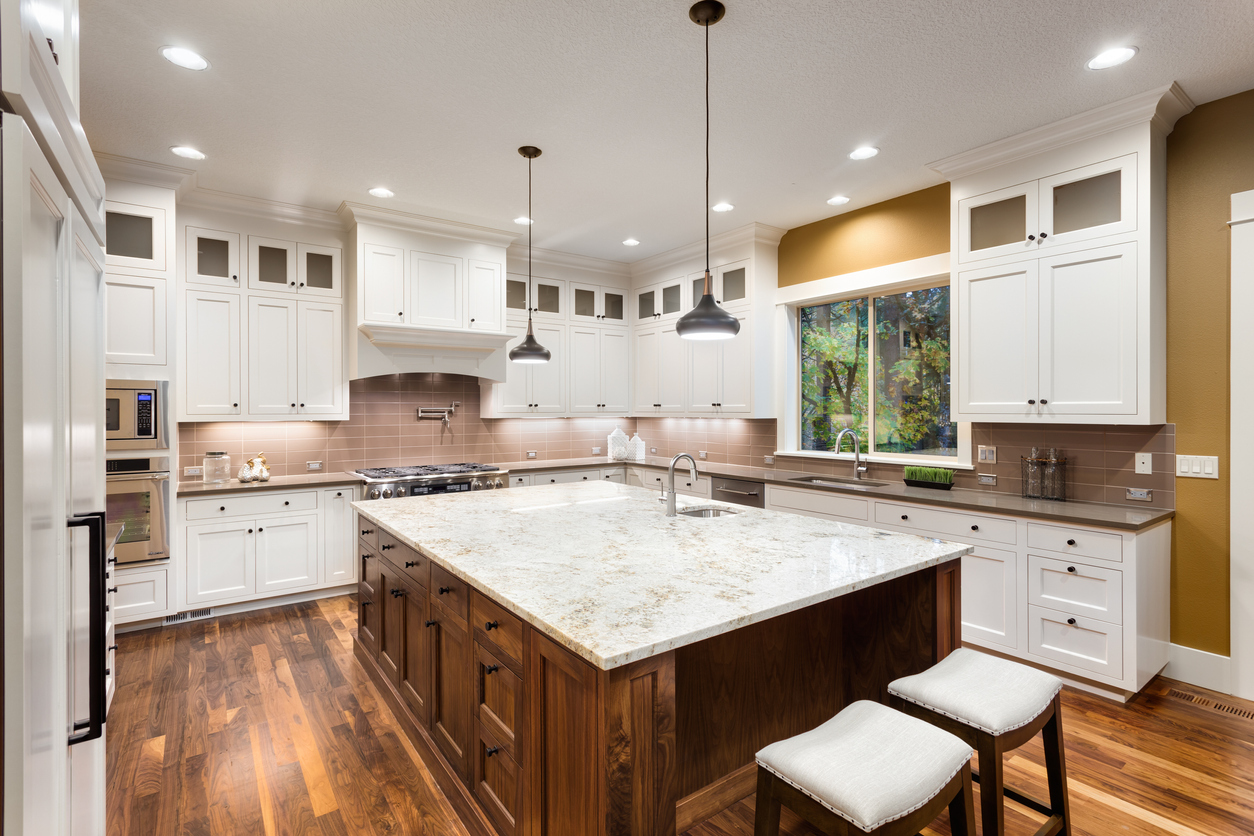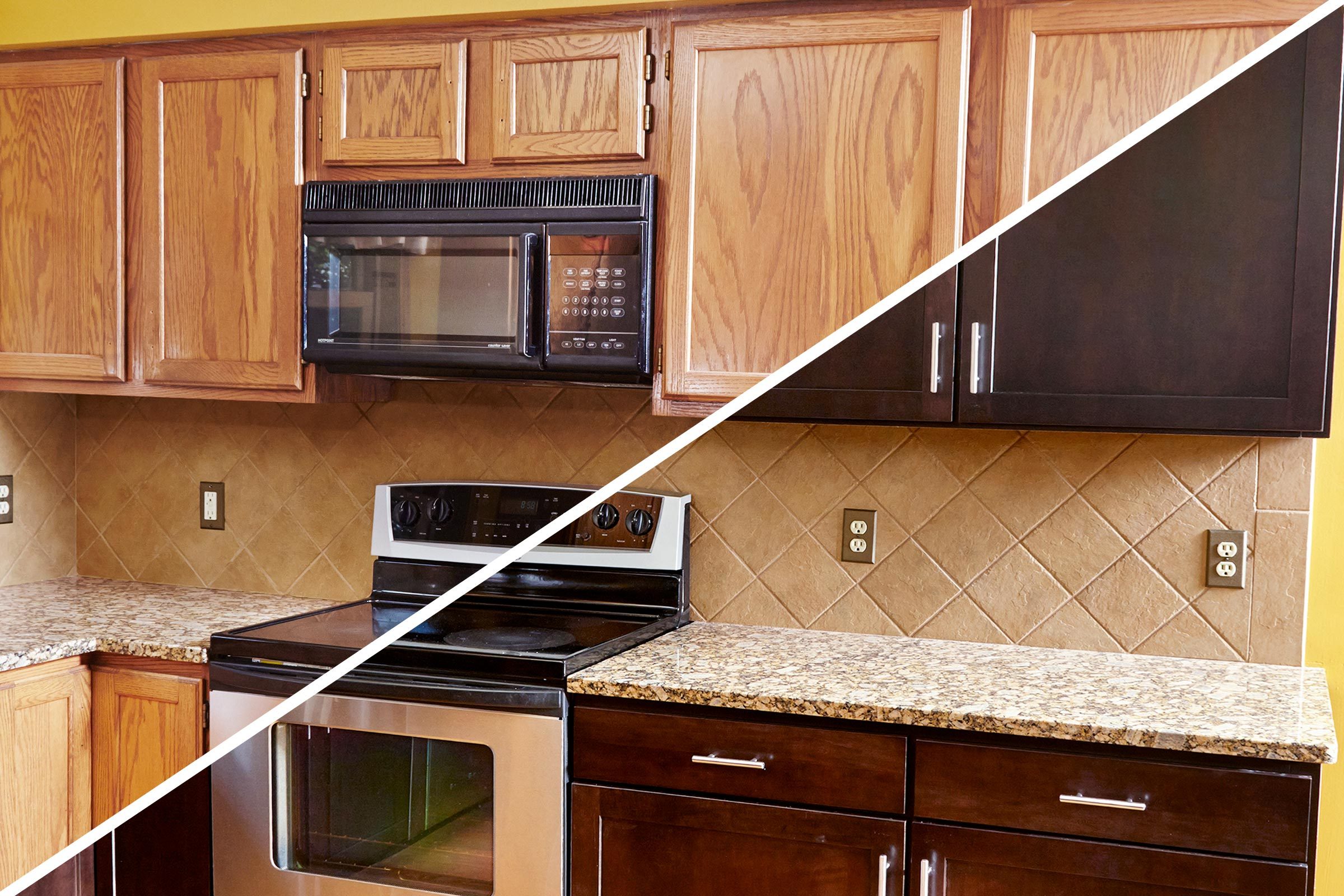Kitchen Cabinet Styles and Flooring Options

The style of your kitchen cabinets and the choice of flooring play a significant role in creating a cohesive and aesthetically pleasing space. By carefully considering the different options available, you can design a kitchen that reflects your personal taste and enhances the overall ambiance.
Kitchen Cabinet Styles
The choice of kitchen cabinet style can greatly influence the overall look and feel of your kitchen. Here are some popular styles:
- Shaker: Shaker cabinets are characterized by their simple, clean lines and recessed panel doors. Their timeless appeal makes them a versatile choice for various kitchen styles, from traditional to contemporary.
- Traditional: Traditional kitchen cabinets often feature ornate details, such as raised panel doors, decorative moldings, and intricate hardware. These cabinets exude a sense of warmth and elegance, making them ideal for kitchens with a classic or farmhouse aesthetic.
- Modern: Modern kitchen cabinets are known for their sleek, minimalist designs. They often feature flat panel doors, simple hardware, and clean lines. These cabinets create a sophisticated and contemporary feel, perfect for modern or minimalist kitchens.
- Contemporary: Contemporary kitchen cabinets share similarities with modern styles but often incorporate bolder colors, materials, and textures. They can feature unique finishes, such as high-gloss lacquers or metallic accents, adding a touch of drama and personality to the kitchen.
Flooring Options
The flooring you choose can complement your kitchen cabinet style and create a harmonious look. Here are some popular flooring options:
- Hardwood: Hardwood flooring is a classic choice for kitchens, offering durability, warmth, and natural beauty. It complements various cabinet styles, from traditional to contemporary, and comes in a wide range of colors and finishes. For example, light-colored hardwood floors can brighten a kitchen with dark cabinets, while darker hardwood floors can add warmth and depth to a kitchen with light cabinets.
- Tile: Tile flooring is a popular choice for kitchens due to its durability, water resistance, and versatility. It comes in a wide array of materials, colors, and patterns, allowing for endless design possibilities. For instance, ceramic tiles are a budget-friendly option, while porcelain tiles offer greater durability. Mosaic tiles can add a decorative touch, while large format tiles can create a modern and spacious feel.
- Laminate: Laminate flooring is a cost-effective alternative to hardwood, offering a wide range of styles and finishes. It is durable and easy to maintain, making it a practical choice for high-traffic areas. However, laminate flooring can be less durable than hardwood or tile, and it may not be as aesthetically pleasing in some kitchens.
- Vinyl: Vinyl flooring is a popular choice for kitchens due to its affordability, durability, and water resistance. It comes in various styles, including planks, tiles, and sheets, mimicking the look of hardwood, tile, or stone. Vinyl flooring is also relatively easy to install and maintain, making it a practical option for busy kitchens.
Choosing Flooring Colors and Patterns
The color and pattern of your flooring can significantly impact the overall aesthetic of your kitchen. Here are some tips for choosing flooring that complements your cabinet style:
- Consider the overall color scheme: Choose flooring colors that complement the colors of your cabinets, walls, and countertops. For example, light-colored flooring can brighten a kitchen with dark cabinets, while darker flooring can add warmth and depth to a kitchen with light cabinets.
- Think about the size of the room: Smaller kitchens may benefit from light-colored flooring, which can make the space feel larger. Larger kitchens can accommodate darker flooring or bold patterns without feeling cramped.
- Embrace the trend of natural elements: Flooring with natural elements, such as wood, stone, or tile, can create a warm and inviting atmosphere in your kitchen. This trend aligns with the growing emphasis on sustainable and eco-friendly choices.
- Use patterns to add interest: If you prefer a more dramatic look, consider incorporating patterned flooring. However, be mindful of using too many patterns, as it can overwhelm the space. For instance, a subtle pattern in a neutral color can add visual interest without being too distracting.
Color and Material Combinations

Kitchen cabinets and flooring combinations – The color and material choices for your kitchen cabinets and flooring play a significant role in setting the overall mood and style of the space. They can create a sense of warmth, sophistication, or even a calming ambiance. This section explores the impact of different cabinet colors on the kitchen’s feel, identifies popular color combinations, and delves into the use of accent colors and materials to achieve a cohesive design.
The Impact of Cabinet Colors, Kitchen cabinets and flooring combinations
The color of your kitchen cabinets is a primary design element that can significantly influence the overall feel of the space. Different colors evoke distinct emotions and create different visual effects. For instance, white cabinets are known for their ability to create a sense of spaciousness and cleanliness, while dark cabinets can add a touch of drama and sophistication.
- White Cabinets: White cabinets are a classic choice for kitchens, offering a clean and timeless look. They reflect light, making the space appear larger and brighter. White cabinets pair well with various flooring options, from light wood to dark tile, allowing for flexibility in design.
- Gray Cabinets: Gray cabinets are gaining popularity for their versatility. They offer a modern and sophisticated look, blending seamlessly with various color palettes. Gray cabinets can be paired with light or dark flooring, depending on the desired aesthetic.
- Dark Cabinets: Dark cabinets, such as black, navy, or espresso, create a dramatic and elegant atmosphere. They add depth and richness to the space, but they can also make the room feel smaller. Consider using lighter flooring and countertops to balance the darkness.
- Wood Cabinets: Wood cabinets bring warmth and natural beauty to the kitchen. They can range from light and airy to dark and rustic, depending on the wood species and finish. Wood cabinets often complement wood flooring, creating a cohesive and welcoming ambiance.
Popular Color Combinations
Many popular color combinations for kitchen cabinets and flooring have emerged over time, each offering a distinct aesthetic appeal.
- White Cabinets with Dark Flooring: This classic combination creates a striking contrast, with the white cabinets highlighting the dark flooring. This pairing is often found in traditional kitchens, where the dark flooring adds a touch of formality and warmth.
- Gray Cabinets with Light Flooring: This combination offers a modern and airy feel, with the gray cabinets providing a neutral backdrop for the light flooring. The light flooring helps to brighten the space and create a sense of spaciousness.
- Wood Cabinets with Contrasting Flooring: This combination allows for a cohesive and natural look, with the wood cabinets and flooring complementing each other. The contrasting colors, such as light wood cabinets with dark flooring or vice versa, add visual interest and depth to the space.
Accent Colors and Materials
Accent colors and materials, such as backsplashes and countertops, play a crucial role in creating a cohesive design. They can complement the cabinet and flooring colors, add pops of color, or introduce a contrasting element.
- Backsplashes: Backsplashes can be used to add visual interest and protect the wall behind the stove and sink. They can be made from various materials, including tile, stone, glass, and metal. Consider using a backsplash that complements the cabinet and flooring colors or introduces a contrasting element.
- Countertops: Countertops are a prominent feature in the kitchen, and they can significantly impact the overall design. Popular countertop materials include granite, quartz, marble, and laminate. Choose a countertop material that complements the cabinet and flooring colors and creates a cohesive aesthetic.
Creating a Cohesive Design: Kitchen Cabinets And Flooring Combinations

A cohesive kitchen design seamlessly blends cabinet and flooring choices with the existing layout and natural light, creating a harmonious and visually appealing space. This involves thoughtful consideration of material textures, color palettes, and how these elements interact with the overall design.
Integrating Layout and Natural Light
The kitchen’s layout and natural light play a crucial role in determining the most suitable cabinet and flooring options. For instance, a kitchen with limited natural light might benefit from lighter flooring and cabinets to enhance brightness. Conversely, a kitchen with ample natural light can accommodate darker or bolder choices.
The kitchen’s layout and natural light are critical factors in selecting cabinet and flooring options.
- Open Floor Plans: In open floor plans, consider using flooring that flows seamlessly from the kitchen to adjacent areas, creating a sense of continuity.
- Small Kitchens: Lighter flooring and cabinets can make a small kitchen appear larger and brighter.
- Natural Light: Kitchens with ample natural light can accommodate bolder color palettes and darker flooring options.
Utilizing Materials and Textures
Creating visual interest and depth involves using different materials and textures for cabinets and flooring. For example, incorporating a wood floor with a high-gloss finish can create a sense of sophistication and contrast with matte cabinets.
Different materials and textures can be combined to create visual interest and depth.
- Wood Flooring: Wood flooring offers warmth and durability and can be stained in various shades to complement different cabinet styles.
- Tile Flooring: Tile flooring provides a durable and easy-to-clean option, available in various colors, patterns, and materials.
- Cabinet Finishes: Cabinet finishes can range from smooth and glossy to textured and matte, offering a variety of aesthetic options.
Kitchen Layout Design
Here’s an example of a kitchen layout showcasing a cohesive design using a combination of cabinet and flooring choices:
The kitchen layout should showcase the chosen cabinet and flooring combinations effectively.
- Layout: A galley kitchen with a central island can effectively display a combination of dark cabinets and light flooring. The island could feature contrasting lighter cabinets, creating a focal point.
- Cabinet Choice: Dark, matte-finished cabinets on the perimeter walls provide a sense of sophistication and contrast with the light flooring.
- Flooring Choice: Light, wide-plank wood flooring provides a sense of warmth and continuity, complementing the dark cabinets.
- Table Layout: A round dining table with chairs placed around the island creates a social and inviting dining space.
Choosing the right kitchen cabinet and flooring combination sets the stage for your dream kitchen. But don’t forget the finishing touch! Crown molding adds elegance and sophistication, and there are many styles to choose from. Check out this guide on types of crown molding for kitchen cabinets to find the perfect match for your cabinet and flooring choices.
Once you’ve decided on your crown molding, you’ll be one step closer to a kitchen that’s both stylish and functional.
When designing your dream kitchen, it’s essential to consider the perfect harmony between cabinet styles and flooring choices. From sleek modern cabinets to rustic farmhouse designs, the right flooring can complement your aesthetic. For a touch of modern elegance, consider incorporating an aluminium sliding door for kitchen cabinet , which adds a touch of sophistication while maximizing space.
By thoughtfully combining cabinet styles, flooring, and innovative features like aluminium sliding doors, you can create a kitchen that is both functional and visually stunning.
